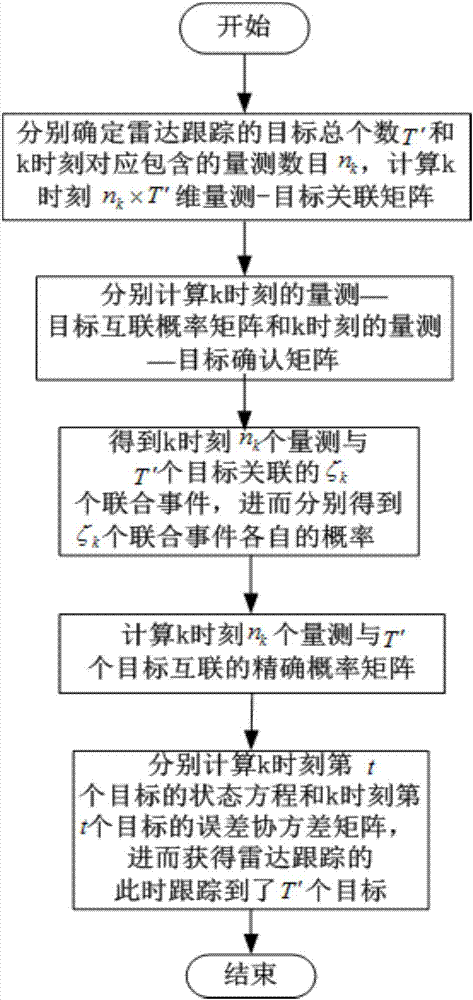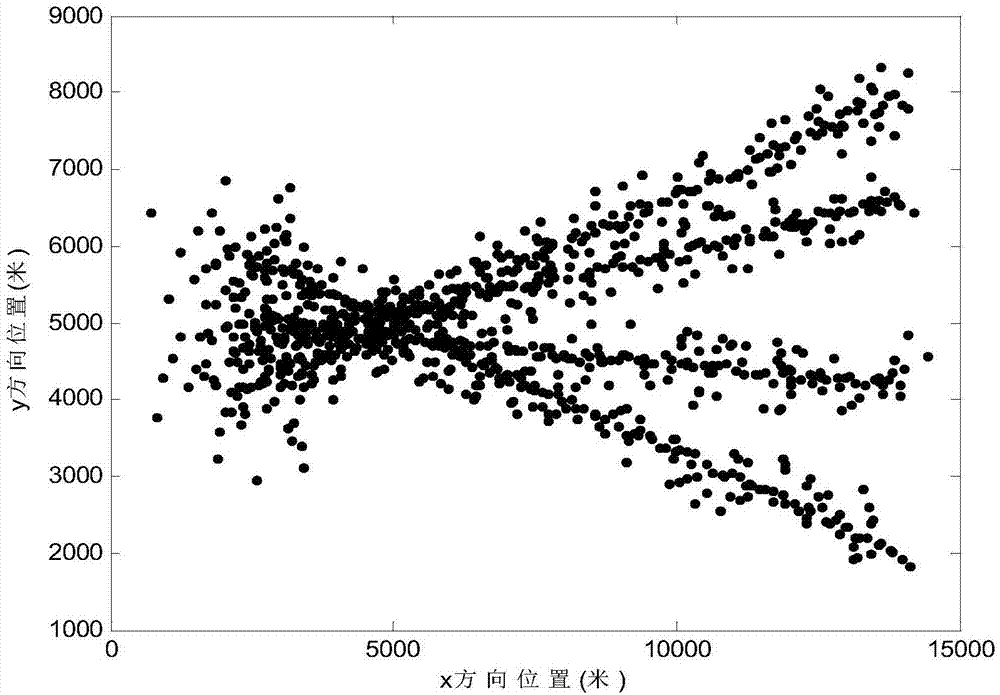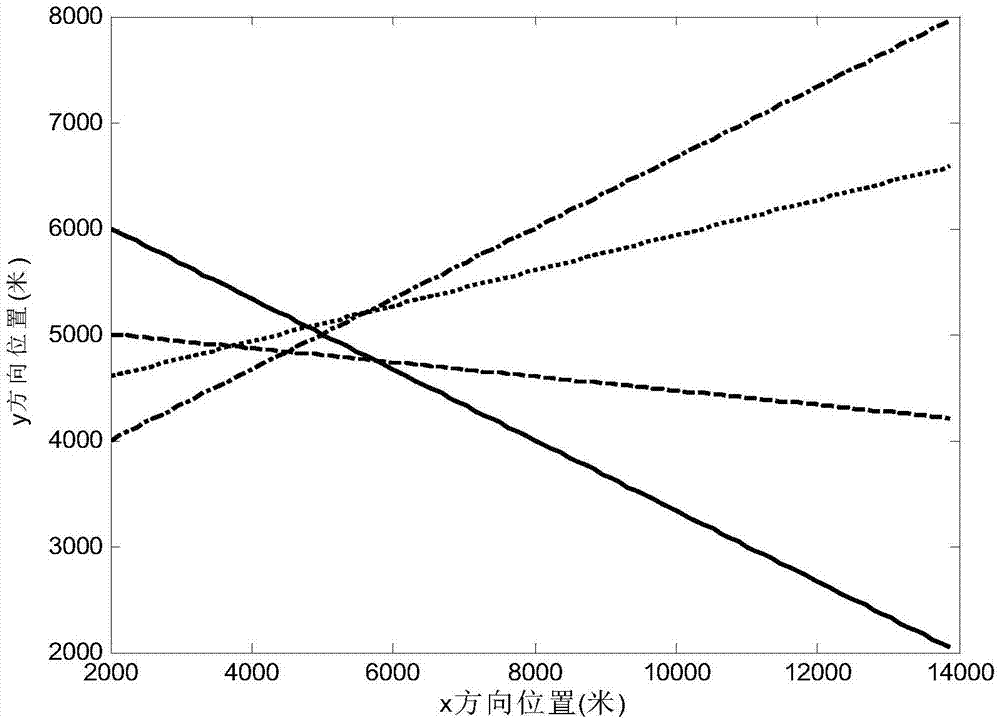Radar multi-target tracking optimization method based on joint probability data association algorithm
A multi-target tracking and data correlation technology, applied in the direction of reflection/re-radiation of radio waves, utilization of re-radiation, measurement devices, etc. Good tracking performance and the effect of reducing the amount of calculation
- Summary
- Abstract
- Description
- Claims
- Application Information
AI Technical Summary
Problems solved by technology
Method used
Image
Examples
Embodiment Construction
[0024] refer to figure 1 , is a flow chart of the radar multi-target tracking optimization method based on the joint probability data association algorithm of the present invention; the radar multi-target tracking optimization method based on the joint probability data association algorithm comprises the following steps:
[0025] Step 1. Determine the total number of targets tracked by the radar as T′, and determine the number of measurements corresponding to time k as n k , and respectively record the state estimation of the t-th target at time k-1 as Denote the state error covariance matrix of the t-th target at time k-1 as P t (k-1|k-1), the state transition matrix of the t-th target at time k-1 is recorded as F t (k|k-1), the measurement matrix of the t-th target at time k is recorded as H t (k), the process noise covariance matrix of the t-th target at time k-1 is recorded as Q t (k-1), the measurement noise covariance matrix of the t-th target at time k is denoted a...
PUM
 Login to View More
Login to View More Abstract
Description
Claims
Application Information
 Login to View More
Login to View More - R&D
- Intellectual Property
- Life Sciences
- Materials
- Tech Scout
- Unparalleled Data Quality
- Higher Quality Content
- 60% Fewer Hallucinations
Browse by: Latest US Patents, China's latest patents, Technical Efficacy Thesaurus, Application Domain, Technology Topic, Popular Technical Reports.
© 2025 PatSnap. All rights reserved.Legal|Privacy policy|Modern Slavery Act Transparency Statement|Sitemap|About US| Contact US: help@patsnap.com



